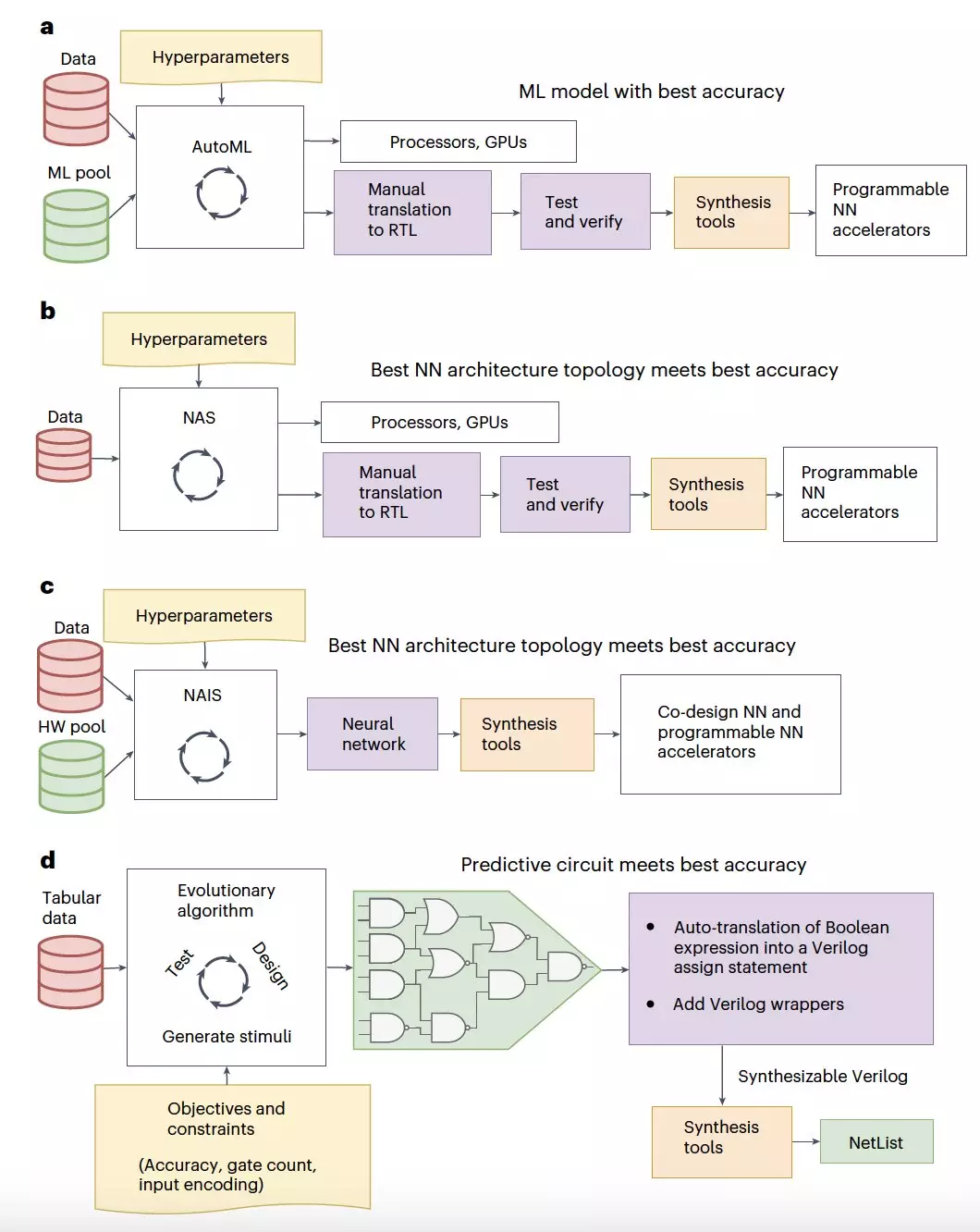The field of deep learning has seen remarkable progress in recent years, with advancements in tasks such as image classification and natural language processing. As a result, the demand for computational power to run deep neural networks has increased significantly. To address this demand, researchers have been exploring the development of hardware accelerators, specialized computing devices designed to handle specific computational tasks more efficiently than traditional CPUs.
Researchers at the University of Manchester and Pragmatic Semiconductor have introduced a new machine learning-based method to automatically generate classification circuits from tabular data. These circuits, known as “tiny classifiers,” are comprised of only a few hundred logic gates but have been shown to achieve accuracies comparable to state-of-the-art machine learning classifiers. By utilizing an evolutionary algorithm to search for optimal logic gate configurations, the tiny classifiers can maximize training prediction accuracy while minimizing hardware resources and power consumption.
The researchers conducted simulations to test the performance of their tiny classifier circuits and found highly promising results in terms of accuracy and power consumption. Additionally, they validated their findings by implementing the circuits on a real, low-cost integrated circuit. The results showed that the tiny classifiers outperformed the best-performing machine learning baseline, using significantly less area and power. When implemented as a low-cost chip on a flexible substrate, the tiny classifiers occupied even less area, consumed less power, and had a better yield compared to existing hardware-efficient ML baselines.
Moving forward, the tiny classifiers developed by the researchers have the potential to revolutionize various real-world applications. For example, they could be used as triggering circuits for smart packaging and monitoring systems, allowing for efficient and cost-effective near-sensor computing. The versatility and efficiency of these tiny classifiers make them ideal for a wide range of tasks, showcasing the potential for machine learning-driven hardware solutions in the future.
The development of tiny classifiers represents a significant advancement in the field of machine learning and hardware acceleration. By automating the generation of classification circuits and maximizing performance while minimizing resource usage, researchers are paving the way for more efficient and cost-effective computing solutions. With further refinement and application, tiny classifiers have the potential to transform the landscape of machine learning and enable innovative solutions for various industries.


Leave a Reply